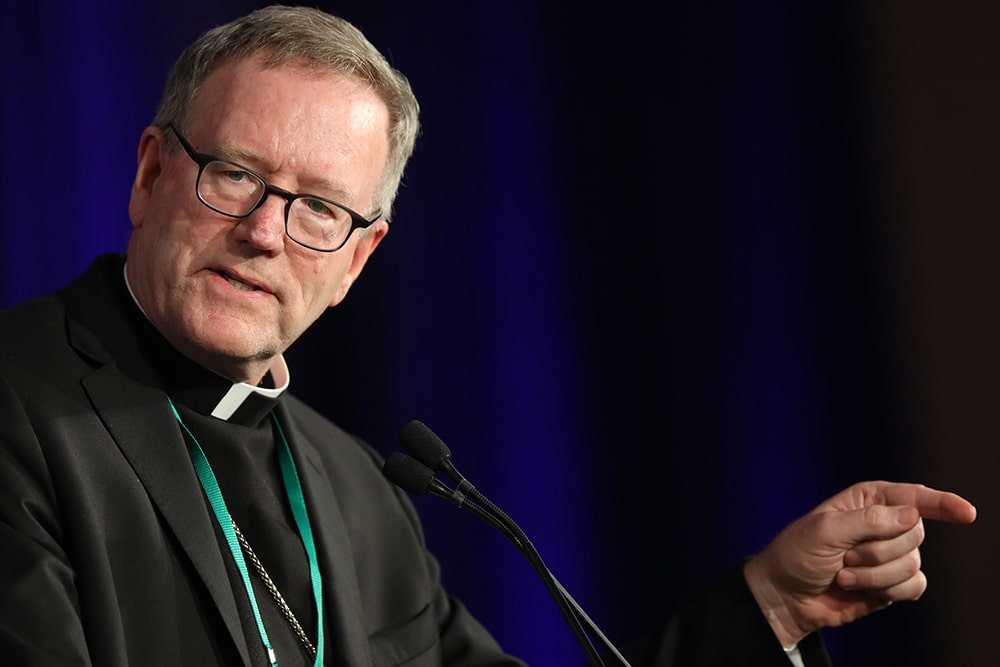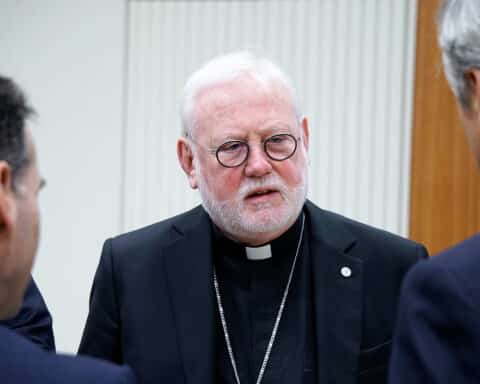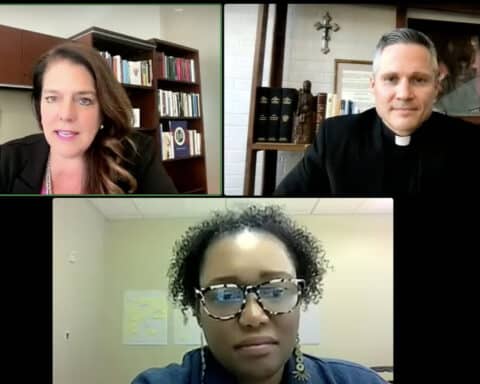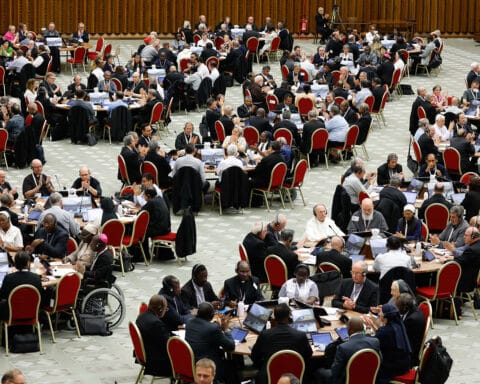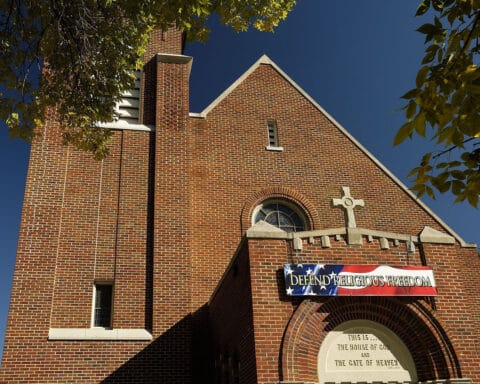The U.S. bishops are gathered in Baltimore this week for their annual general assembly. Part of their discussion on the first afternoon, Nov. 11, centered around how the Church can work to get back the “nones” — a rising portion of Americans who say they are religiously unaffiliated. A little background, which we also have reported on here: We know that only 20% of the population is now Catholic, and we know that 26% of American adults identify as religiously unaffiliated (a 10% increase since 2007). And 40% of millennials, or those born between 1981-96, identify as unaffiliated.
In his presentation, Bishop Robert Barron, auxiliary of Los Angeles and chair of the U.S. Conference of Catholic Bishops’ Committee on Evangelization and Catechesis, suggested five paths that he believes would be useful in reaching out to people who are alienated from the Church.
First, Bishop Barron recommended that young people become more involved in the work of justice, as young people resonate with the Church’s outreach to the poor and the needy. “We have a very powerful tradition around doing the works of justice, and young people like it,” Bishop Barron said. “I think we should lead with it.”
Bishop Barron said that studies show that the more involved young people are in the work of justice, the closer they stay to the life of the Church. He was careful not to present this as an alternative to the Church’s sexual teachings, but rather as a complement.
The second method for bringing back the unaffiliated, Bishop Barron said, is leading with beauty. Today, young people don’t like being told what to do and think, but what’s so attractive about using beauty is that “I’m not telling you what to do, I’m showing you,” he said. What does this look like concretely? This could be, he said, the beauty of churches or, perhaps less conventionally, the beauty of websites. “This is how most people find us,” he said.
Third, the Church has to stop dumbing down the Faith, Bishop Barron said. We now have at least two generations that have received inadequate catechetical formation, he added, and many questions remain unanswered.
“We have a very smart tradition, but we have not communicated that effectively to our young people,” which leaves a lot of their questions unanswered, he said. Providing good answers to tough questions is a major part of accompaniment, and this includes nonjudgmental listening, and then, at key moments, teaching.
Fourth, Bishop Barron recommends turning every parish into a missionary society. “The young people typically aren’t going to come to us,” he said. “We have to go out to them.” Parishes must become places that send people forth.
Finally, Bishop Barron recommends creatively using new media to reach the masses who have become disengaged with the Church. “Using this tool, which didn’t exist even 10 years ago, we can now reach into their world,” he said. “We should invest a lot of time and money in getting really good people to work our social media.”
This person should be someone who can use this tool effectively — that is, someone who knows the culture, knows how to reach it, but also knows the Catholic tradition.
Gretchen R. Crowe is editorial director for periodicals at OSV. Follow her on Twitter @GretchenOSV.

